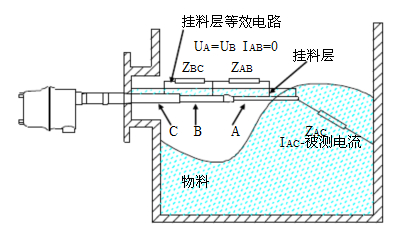The measurement of the accuracy of the material is often encountered during level measurement. Now we recommend a radio frequency admittance level meter. It is a special anti-impact, wear-resistant probe sheath material used at home and abroad. It is especially suitable for measuring under the conditions of high temperature, high pressure, strong corrosion, strong adhesion, strong impact, strong abrasion, and large dust. There are other types of level comparators that cannot be compared. Applicable to general-purpose point control instruments, products for limit control and alarm, suitable for most applications. The instrument is widely used in industrial and civil fields. No matter whether it is indoor or outdoor, this instrument has no special requirements for on-site installation conditions with respect to other forms of instruments. The 502 series is a universal point-controlled instrument. The instrument consists of a circuit unit, an explosion-proof enclosure and rod or cable sensor elements (also called sensors or probes). The sensor can be selected from a variety of materials and can be either integral or separate. installation. The integral installation means that the circuit unit and the sensing element are arranged on an explosion-proof enclosure. The split-type installation refers to the circuit unit and the sensing element that are respectively arranged on two independent explosion-proof enclosures, and are connected by special cables from the manufacturer. RF admittance level control technology is a kind of capacitive level control technology developed, anti-hanging material (sensor attached material called bit hanging) better performance, more reliable work, measurement more accurate, more versatile The level control technology, 'RF admittance' in the 'RF' both high frequency, 'admittance' in the meaning of the reciprocal of the impedance of electricity, it consists of resistive components, capacitive components, sensible components integrated, so the radio frequency Admittance technology can be understood as a method of measuring admittance with high-frequency signals. The important difference between point-based RF admittance technology and capacitance technology is the adoption of three-terminal technologies and the diversity of measurement parameters. The measurement signal at the center of the circuit unit is connected to the centerline of the coaxial cable and then connected to the center of the sensor. At the same time, the coaxial cable shielding layer is suspended at a very small amplitude and very stable, but at the same level as the measurement signal, the same phase, and the same frequency, but there is no direct electrical relationship at the same isolation level, its effect is equivalent to, measurement The signal passes through a non-inverting amplifier with a gain of '1' and strong drive capability. The output is connected to the coaxial cable shield and then to the sensor's shield. The ground wire is the other independent wire in the cable. Since the centerline of the coaxial cable has the above-mentioned relationship with the shielding layer, there is no potential difference between the two, and no current flows. No current leaks from the centerline, and there is no capacitance or capacitance equal to zero between the two. . Therefore, the temperature effect of the cable will not affect the mounting capacitor. 
Figure 1.1 502 sensor structure diagram for the sensor on the impact of hanging material, using a new sensor structure, five-layer concentric structure, see Figure 1.1 sensor structure: the innermost layer is the central probe, the middle is the shielding layer, the outermost Ground the mounting threads and separate them with an insulating layer. As with the coaxial cable, there is no potential difference between the center probe and the shield. Even if the resistance of the sensor is small, no current will flow. The electronic instrument only measures the sensor center to the opposite tank. The wall (ground) current, because the shield can hinder the current flow back to the container wall along the sensor, so the current to the ground can only pass through the end of the sensor through the measured material to the opposite container wall. Both UA = UB, IAB = (UA-UB) * Y = 0 Although there is a potential difference between the shielding layer and the container wall, there is a current flowing between the two, but the current is not measured and does not affect the measurement junction. In this way, the measuring end is protected from the influence of the hanging material. Only when the material in the container actually rises and touches the center probe, the measured current can be formed between the center probe and the ground through the material to be measured. The meter detects the current and generates an effective output signal. The radio frequency admittance technology introduces measurement parameters, in particular resistance parameters, in addition to the capacitance, which increases the signal-to-noise ratio of the meter signal, greatly improves the resolution, accuracy, and reliability of the meter; the diversity of the measured parameters also has Forcefully expanded the reliable application of the instrument. 
Figure 1.2 The equivalent of the measurement
Powerwall Battery is a high-tech product developed to meet the requirements of the new home backup power supply. It has the characteristics of integration, miniaturization, light weight, intelligence, standardization, and environmental protection.ZTTEK-48V-100Ah has a lithium (LiFePO4) battery storage capacity of 5kWh, allowing you to stay away from the grid as you like.
Home Solar Energy Storage,Home Solar Energy Storage Battery,Home Energie Storage Batterie,Lithium Battery For Solar Energy Storage
Jiangsu Zhitai New Energy Technology Co.,Ltd , https://www.zhitaibattery.com
